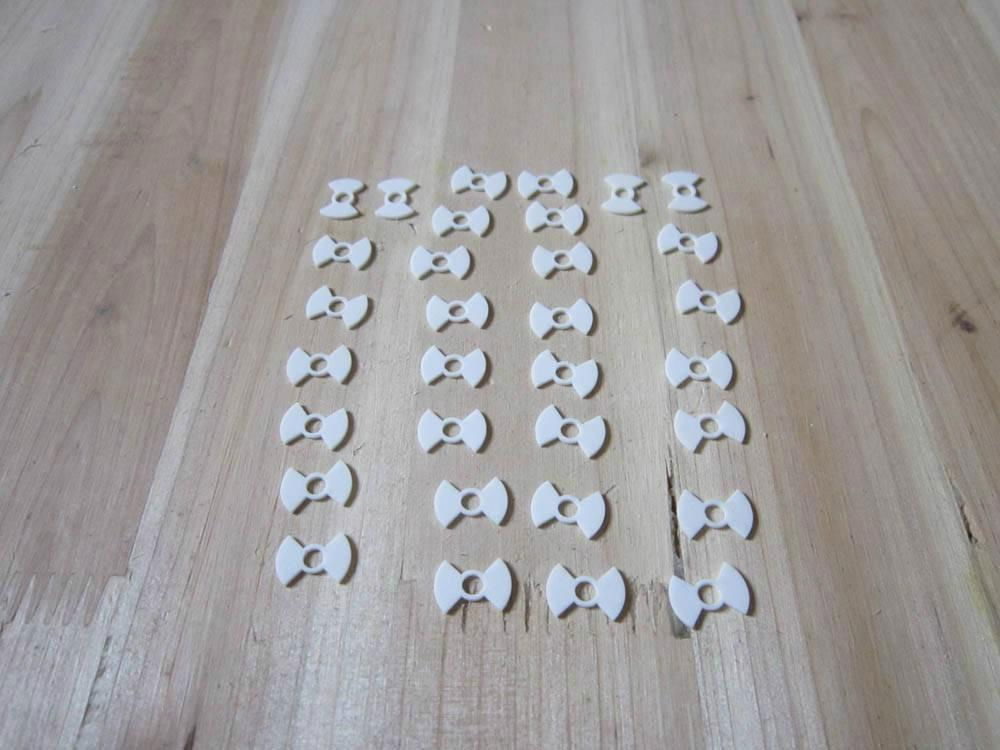| Model: | - |
|---|---|
| Brand: | - |
| Origin: | Made In China |
| Category: | Chemicals / Inorganic Chemical Materials / Oxide |
| Label: | Alumina ceramic vane , technical ceramic , alumina ceramic |
| Price: |
-
|
| Min. Order: | 5000 pc |
Product Description
Alumina ceramic vane
alumina ceramic
technical ceramic
1.Technical specification:
Alumina content :95%
Concentricity: 0.0A
The Parallel After polishing :0.02
Flatness after polishing two sides: 1.0+0.05
Note:we can control the tolerance from 0.02 to 0.01,so in fact the Flatness of some of the ceramic vane after polishing can be 1.0+0.03 or 1.0+0.04
No bursting in the edge after grinding
No air bubble inside ceramic body
No crack in the surface
2.Application of Alumina ceramic vane :
Alumina content :95%
Concentricity: 0.0A
The Parallel After polishing :0.02
Flatness after polishing two sides: 1.0+0.05
Note:we can control the tolerance from 0.02 to 0.01,so in fact the Flatness of some of the ceramic vane after polishing can be 1.0+0.03 or 1.0+0.04
No bursting in the edge after grinding
No air bubble inside ceramic body
No crack in the surface
2.Application of Alumina ceramic vane :
Produced as dielectric constant the vane part of Closed Loop Galvanometer,suit for different kinds of Closed Loop Galvanometer such as:6200H/6210H/6215H/VM2500/6230H/6231HC/6240H/MPM20A/6260H
Note:above model by cambridge technology standard.
3.How it works?
The closed loop scanner adds an additional element. The shaft is fitted with a position detector that can determine where the scanner is within it's range of motion. In modern high-speed scanners, the position detector uses an optical system with a vane that occludes the light from an LED falling onto a photo sensor. As the shaft moves through it's range of motion, more or less light falls on the photo sensor generating a signal that is proportional to the position of the shaft and it's attached mirror.
In the diagram above, the LED is shown in green and the photo detector in light blue with an occluding vane attached to the shaft between then. The closed loop scanner amplifier is also more complex than the typical open loop scanner amp.
The input signal is sent to the scanner drive stage circuit after passing through the input conditioning circuit. The position of the shaft (and it's attached mirror) is derived from the photo detector in the position detection circuit, which sends that signal to a position correction circuit. The position correction circuit compares the actual position of the mirror, with the position the mirror should be in according to the signal from the input conditioning circuit. It then generate an error correction signal and sends that to the scanner drive stage where it is combined with the input signal. The drive stage provides the current to the coils in the scanner to move the mirror.
The position of the mirror is thus compared in real time with the input signal and corrected for any inaccuracy. This allows the very precise and accurate control of the mirror that is necessary for projecting laser graphics. Naturally, since this is a mechanical system, there are limits to how fast the mirror can be moved.
4.The great advantages of our alumina ceramic vane
Due to the excellent flatness of alumina ceramic vance(Note:we can control the tolerance from 0.02 to 0.01,so in fact the Flatness of some of the ceramic vane after polishing can be 1.0+0.03 or 1.0+0.04),when it works,the alumina ceramic vane deflect with the shaft,won’t affect the electric voltage,so it keeping the all Closed Loop Galvanometer working steadily,you don’t need the adjusting the device frequently.
Note:above model by cambridge technology standard.
3.How it works?
The closed loop scanner adds an additional element. The shaft is fitted with a position detector that can determine where the scanner is within it's range of motion. In modern high-speed scanners, the position detector uses an optical system with a vane that occludes the light from an LED falling onto a photo sensor. As the shaft moves through it's range of motion, more or less light falls on the photo sensor generating a signal that is proportional to the position of the shaft and it's attached mirror.
In the diagram above, the LED is shown in green and the photo detector in light blue with an occluding vane attached to the shaft between then. The closed loop scanner amplifier is also more complex than the typical open loop scanner amp.
The input signal is sent to the scanner drive stage circuit after passing through the input conditioning circuit. The position of the shaft (and it's attached mirror) is derived from the photo detector in the position detection circuit, which sends that signal to a position correction circuit. The position correction circuit compares the actual position of the mirror, with the position the mirror should be in according to the signal from the input conditioning circuit. It then generate an error correction signal and sends that to the scanner drive stage where it is combined with the input signal. The drive stage provides the current to the coils in the scanner to move the mirror.
The position of the mirror is thus compared in real time with the input signal and corrected for any inaccuracy. This allows the very precise and accurate control of the mirror that is necessary for projecting laser graphics. Naturally, since this is a mechanical system, there are limits to how fast the mirror can be moved.
4.The great advantages of our alumina ceramic vane
Due to the excellent flatness of alumina ceramic vance(Note:we can control the tolerance from 0.02 to 0.01,so in fact the Flatness of some of the ceramic vane after polishing can be 1.0+0.03 or 1.0+0.04),when it works,the alumina ceramic vane deflect with the shaft,won’t affect the electric voltage,so it keeping the all Closed Loop Galvanometer working steadily,you don’t need the adjusting the device frequently.
Member Information
| CeraTek Technical Ceramic Co., Limited | |
|---|---|
| Country/Region: | Hong Kong S.A.R |
| Business Nature: | Manufacturer |
| Phone: | 18017112581 |
| Contact: | Jack chen (Sale Director) |
| Last Online: | 12 Jul, 2022 |
Related Products of this Company








